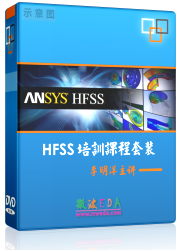HFSS-IE
HFSS-IE is a fullwave Integral Equation solver that calculates the “currents” on the surfaces of the objects in the model – both finite conducting and lossy dielectric objects are allowed. HFSS-IE is designed for large open problems. Application areas include:
• Radar cross Section (RCS)
• Antenna placement (for example, antenna on a vehicle)
• Stand alone antennas
• Coupling. EMI/EMC
HFSS-IE features:
• Works from within the standard HFSS desktop, sharing the GUI and the same 3D modeler and reporting features.
• Naturally open – no air volume or ABC needed
• Support for infinite ground plane
• Supports ground plane apertures
• Supports lumped gap and incident wave excitations.
• Supports discrete and/or interpolating frequency sweeps
• Near and far field calculations
• For larger models, HFSS-IE uses automated advanced matrix based compression techniques.
• Data link from HFSS available, which means that you divide appropriate models based on each solver’s advantages.
• Physical Optics solver option for plane incident wave and far field incident wave models.
• Use Distributed memory model option, whose features are discussed in Distributed Memory Solutions with HFSS-IE.
How HFSS-IE is different than HFSS
HFSS uses the finite element method (FEM) to solve for the electromagnetic fields in the solution region. It meshes over the entire solution volume and solves for the electric field throughout that volume.
HFSS-IE uses an integral equation (sometimes called method of moments = MoM) and solves for the currents on surfaces of objects. It creates a triangular surface mesh on all objects - it solves for the currents or equivalent currents on conducting and dielectric objects. The IE technique is by default an "open model" technique so no ABCs are needed. It can handle closed spaces, but that is typically not where it will be used. In addition HFSS-IE includes a true infinite ground plane.
Related Topics
HFSS-IE Options
Inserting an HFSS or HFSS-IE Design
Setting up an HFSS or HFSS-IE Design
Assigning Excitations
Assigning HFSS-IE Boundaries
Adding a Solution Setup to an HFSS-IE Design
HFSS-IE Getting Started Guides
Distributed Memory Solutions within HFSS-IE
Technical Notes: Integral Equation Method Used in HFSS-IE
-

国内最全面的HFSS培训课程,包含7套视频教程和2本教材,资深专家讲解,视频操作演示,结合最新工程案例,让HFSS学习不再难...【详细介绍】





